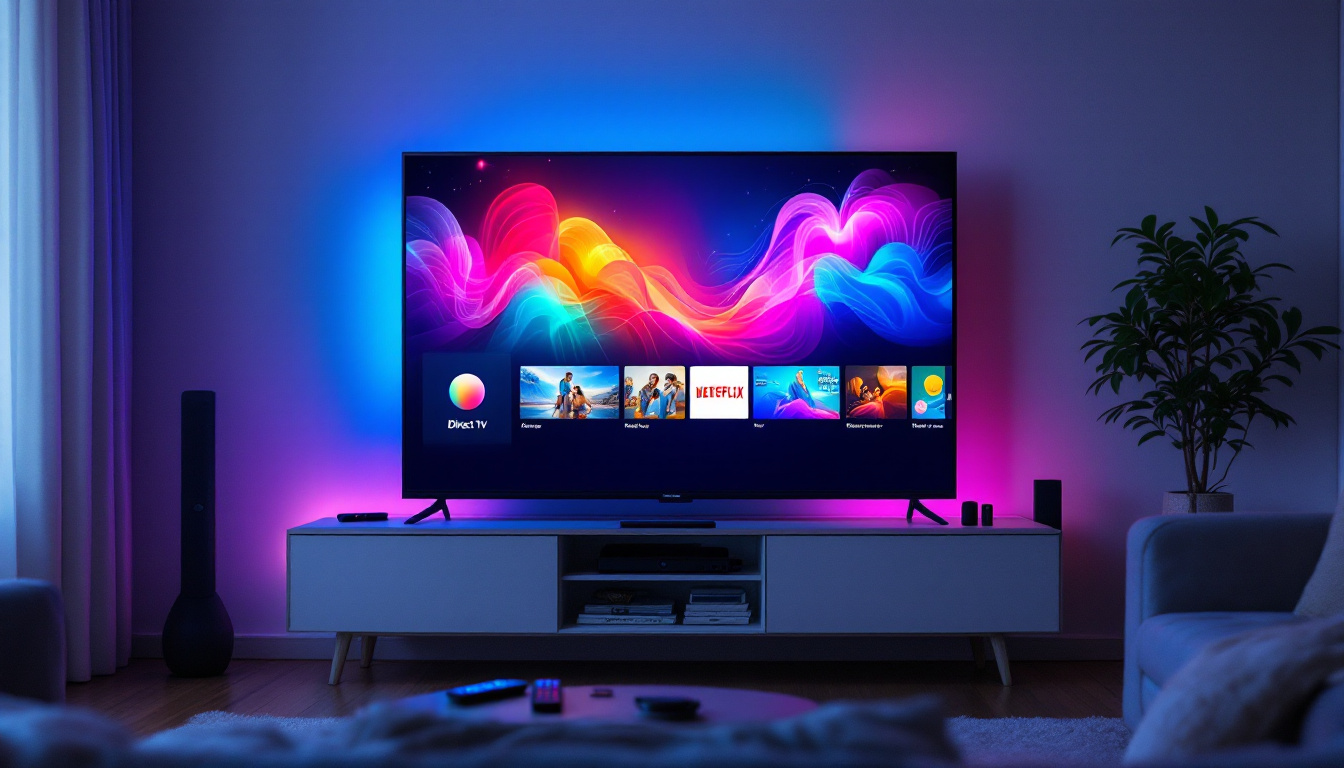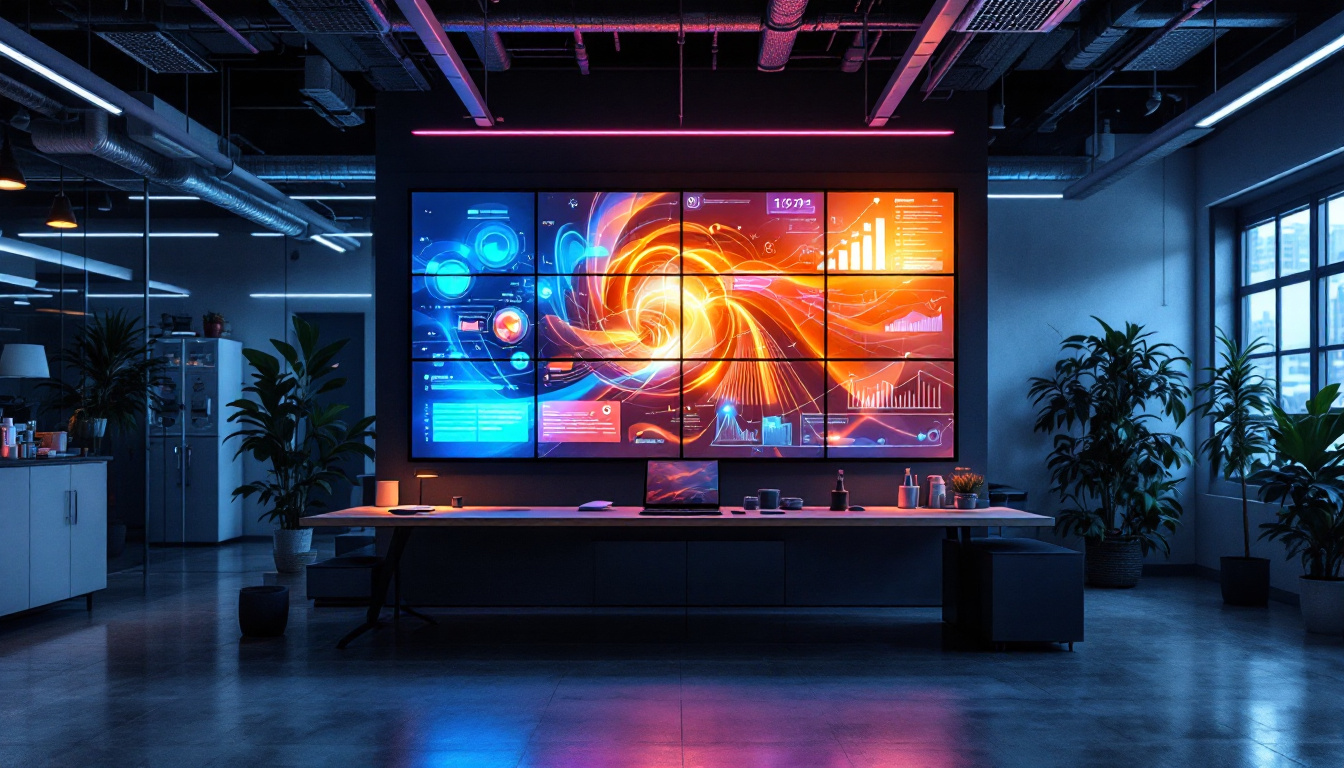When it comes to choosing a television, the terms LCD and LED often come up, leaving many consumers puzzled. While both technologies serve the purpose of delivering high-quality images, they differ significantly in their construction and performance. This article aims to clarify the distinctions between LCD and LED displays, exploring their features, advantages, and disadvantages.
Understanding LCD Technology
Liquid Crystal Display (LCD) technology has been a cornerstone of the television industry for many years. It utilizes liquid crystals sandwiched between two layers of glass or plastic. These crystals manipulate light to produce images. Despite being an older technology, LCD TVs have evolved significantly over time, incorporating advancements that enhance their performance and usability.
How LCD Works
LCD screens rely on a backlight to illuminate the liquid crystals. The most common type of backlighting used in traditional LCDs is fluorescent lamps, which can sometimes lead to uneven brightness across the screen. The liquid crystals themselves do not emit light; instead, they block or allow light to pass through to create images. This is why the quality of the backlight is crucial for the overall picture quality. In recent years, many manufacturers have started to incorporate LED backlighting into their LCD designs, which offers improved brightness and energy efficiency. This hybrid approach has led to the development of LED-LCD TVs, which combine the benefits of both technologies, resulting in better color reproduction and deeper blacks.
Advantages of LCD
One of the primary advantages of LCD technology is its affordability. LCD TVs are generally less expensive than their LED counterparts, making them an attractive option for budget-conscious consumers. Additionally, LCDs are available in a wide range of sizes, catering to various preferences and room sizes. This versatility allows consumers to choose a model that fits their specific needs, whether it’s for a small bedroom or a large living room.
Another benefit is their lightweight design, which makes them easier to mount on walls or move around. LCD TVs also tend to have good color accuracy and are less prone to burn-in issues compared to older plasma screens. Furthermore, many modern LCDs come equipped with smart technology, allowing users to access streaming services and apps directly from their TVs. This integration of smart features has made LCD TVs even more appealing, as they provide a comprehensive entertainment solution without the need for additional devices.
Disadvantages of LCD
Despite their advantages, LCD TVs have some drawbacks. The most notable issue is their limited contrast ratio. Since they rely on a backlight, blacks can appear more like dark gray, which affects the overall viewing experience, especially in darker scenes. Additionally, LCDs have slower response times compared to newer technologies, which can lead to motion blur during fast-paced action scenes. This can be particularly noticeable in sports broadcasts or action movies, where quick movements are common. Some manufacturers have attempted to address this issue by incorporating features like motion smoothing and higher refresh rates, but these solutions can sometimes introduce artifacts that detract from the viewing experience.
Another concern with LCD technology is the viewing angle. While advancements have been made, traditional LCDs can suffer from color distortion and reduced brightness when viewed from off-angles. This limitation can be problematic in larger rooms where viewers may not always be seated directly in front of the screen. As a result, consumers often need to consider their seating arrangement when selecting an LCD TV, ensuring that it meets the needs of their space and viewing habits.
Exploring LED Technology
Light Emitting Diode (LED) technology is often considered a subset of LCD technology, as it uses liquid crystals to create images but employs LEDs for backlighting instead of fluorescent lamps. This innovation has led to significant improvements in picture quality and energy efficiency. The transition from traditional backlighting methods to LED has not only enhanced the viewing experience but has also paved the way for more environmentally friendly options, as LEDs consume less power and have a longer lifespan compared to their predecessors.
How LED Works
LED TVs utilize an array of tiny light-emitting diodes to illuminate the screen. There are two primary types of LED backlighting: edge-lit and full-array. Edge-lit LED TVs have LEDs positioned around the edges of the screen, while full-array LED TVs feature a grid of LEDs behind the entire screen. Full-array technology allows for better control of brightness and contrast, resulting in deeper blacks and more vibrant colors. Additionally, some full-array LED TVs incorporate local dimming technology, which further enhances contrast by dimming specific areas of the screen based on the content being displayed, thus providing an even more immersive viewing experience.
Advantages of LED
One of the standout features of LED TVs is their superior contrast ratio. The ability to achieve true blacks enhances the overall picture quality, making LED TVs particularly appealing for movie enthusiasts and gamers. Furthermore, LED technology is more energy-efficient than traditional LCDs, leading to lower electricity bills over time. This efficiency is not only beneficial for consumers but also contributes to a reduction in carbon footprint, making LED TVs a more sustainable choice for environmentally conscious buyers.
LED TVs are also known for their thinner profiles, allowing for sleek designs that fit seamlessly into modern living spaces. The improved color accuracy and brightness levels make them suitable for various lighting conditions, whether in a dimly lit room or a sunlit environment. Moreover, many LED TVs now come equipped with smart technology, enabling users to stream content directly from the internet, access apps, and even control their TV with voice commands, further enhancing the user experience and making these devices central to home entertainment systems.
Disadvantages of LED
While LED TVs offer numerous benefits, they are not without their drawbacks. The price point can be higher than that of traditional LCDs, which may deter some consumers. Additionally, edge-lit LED TVs can suffer from uneven brightness, particularly in larger screens, where the light may not distribute evenly across the display. This phenomenon, known as “light bleed,” can detract from the viewing experience, especially in scenes with dark backgrounds. Furthermore, while LED technology has advanced significantly, some purists argue that OLED displays still outperform LED in terms of color depth and viewing angles, leading to ongoing debates among tech enthusiasts about the best display technology available.
Comparing Picture Quality
Picture quality is often the most critical factor when choosing between LCD and LED TVs. While both technologies have their merits, LED displays generally outperform traditional LCDs in several key areas.
Contrast and Brightness
LED technology excels in contrast and brightness, thanks to its ability to produce deeper blacks. This is particularly noticeable in scenes with high dynamic range, where the difference between light and dark is pronounced. In contrast, traditional LCDs struggle to achieve true black levels, leading to a less immersive viewing experience.
Color Accuracy
Color accuracy is another area where LED TVs shine. The advanced backlighting technology allows for a broader color spectrum, resulting in more vibrant and lifelike images. While LCDs can produce good colors, they often lack the depth and richness that LED displays offer.
Viewing Angles
Viewing angles can also impact the overall experience. LCDs tend to have limited viewing angles, meaning that colors and brightness can shift when viewed from the side. LED TVs, particularly those with IPS (In-Plane Switching) technology, provide wider viewing angles, allowing for a more consistent picture quality from various positions in the room.
Energy Efficiency and Environmental Impact
In today’s eco-conscious world, energy efficiency is a significant consideration for many consumers. LED technology generally outperforms traditional LCDs in this regard, consuming less power while delivering superior brightness and picture quality.
Energy Consumption
LED TVs are designed to be more energy-efficient, which not only helps reduce electricity bills but also minimizes the environmental impact. This efficiency is particularly beneficial for consumers who watch television for extended periods. In contrast, older LCD models can consume more energy, leading to higher costs over time.
Longevity and Durability
LED displays also tend to have a longer lifespan compared to traditional LCDs. The solid-state nature of LEDs means they are less prone to burn-out and degradation over time. This durability contributes to a lower environmental impact, as consumers are less likely to replace their televisions frequently.
Cost Considerations
When deciding between LCD and LED televisions, cost is often a significant factor. While both technologies have a range of price points, LED TVs typically come with a higher initial investment.
Price Range
LCD TVs are generally more budget-friendly, making them an attractive option for consumers looking for a cost-effective solution. However, the price difference between LED and LCD has narrowed in recent years, with many affordable LED options now available on the market.
Long-Term Value
While LED TVs may require a higher upfront cost, their energy efficiency and superior picture quality can offer better long-term value. Consumers may find that the savings on electricity bills, combined with the enhanced viewing experience, justify the initial investment.
Conclusion: Making the Right Choice
Choosing between LCD and LED technology ultimately depends on individual preferences, budget, and viewing habits. For those seeking an affordable option with decent performance, traditional LCDs may suffice. However, for consumers who prioritize picture quality, energy efficiency, and a modern viewing experience, LED displays are the clear winner.
As technology continues to evolve, consumers can expect further advancements in both LCD and LED technologies. Understanding the differences between these two display types will empower buyers to make informed decisions that best suit their needs.
In summary, while both LCD and LED televisions have their unique advantages and disadvantages, the shift towards LED technology is evident. With superior picture quality, energy efficiency, and design, LED displays are becoming the preferred choice for many households.
Discover the Future of Visual Experience with LumenMatrix
As you consider upgrading to a television that meets your high standards for picture quality and energy efficiency, LumenMatrix stands at the forefront of LED display innovation. Embrace the future with our comprehensive range of LED display solutions, including Indoor and Outdoor LED Wall Displays, Vehicle LED Displays, and more. Each product is crafted to transform your visual experience, whether for personal entertainment or enhancing your business’s brand visibility. Don’t settle for less—check out LumenMatrix LED Display Solutions today and step into a world where clarity, engagement, and cutting-edge technology redefine what it means to watch and display.































